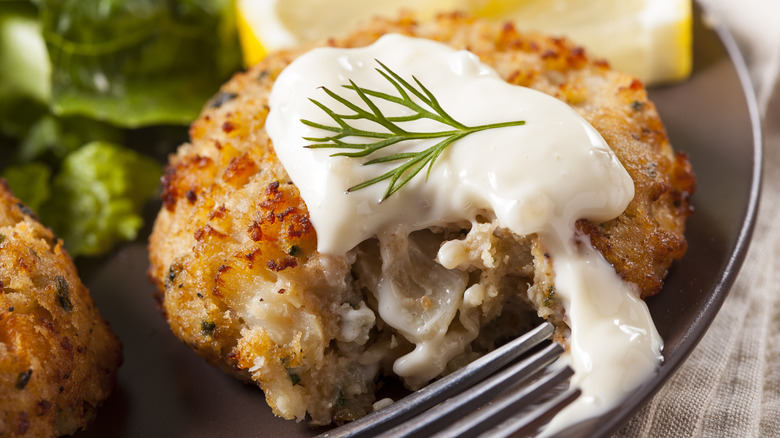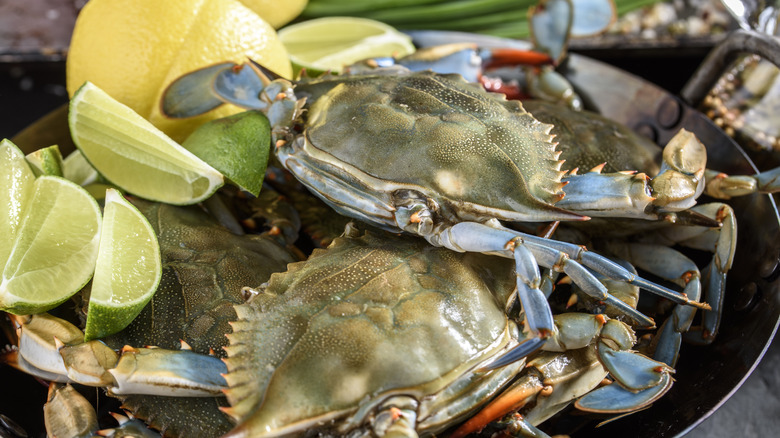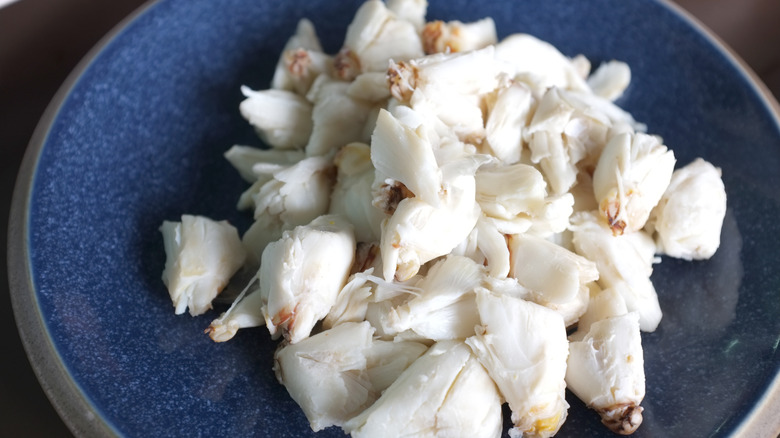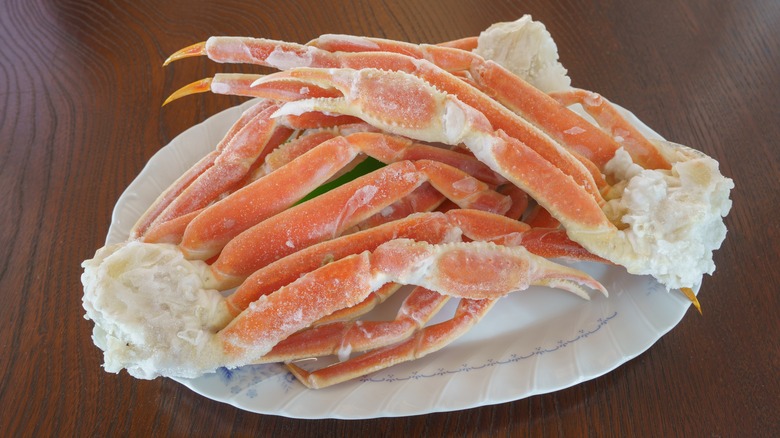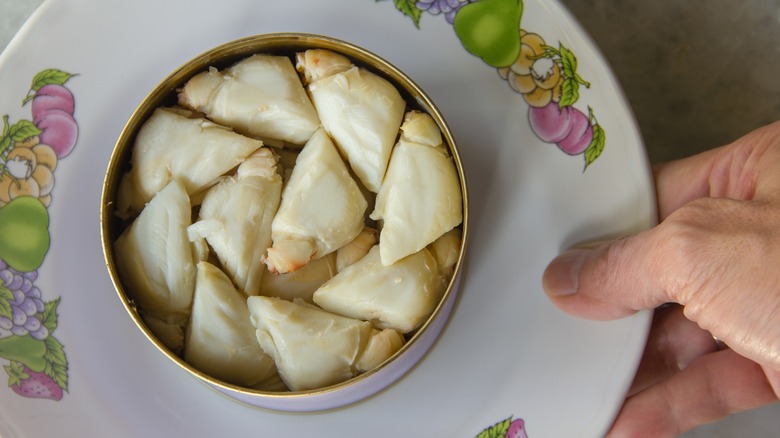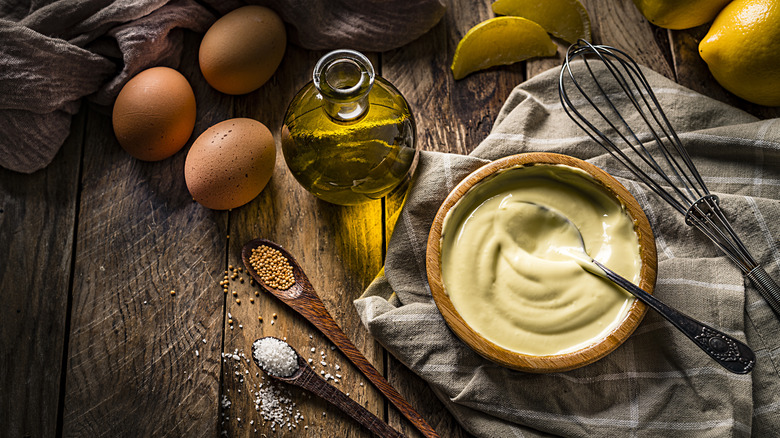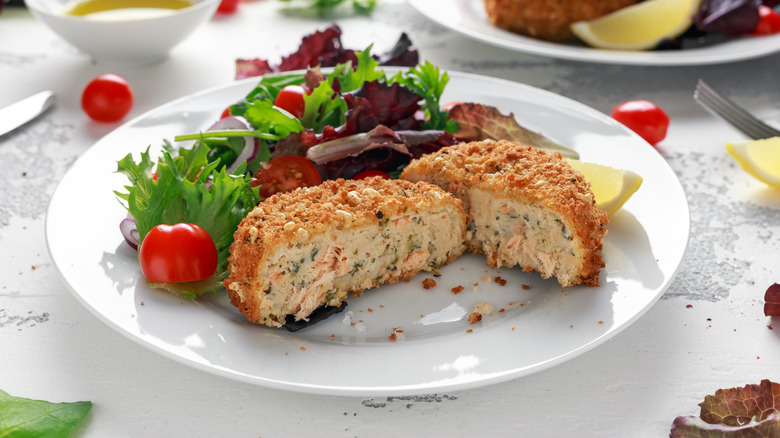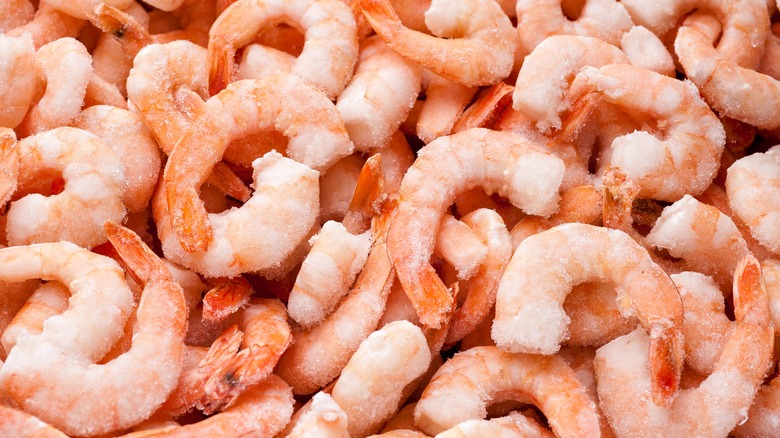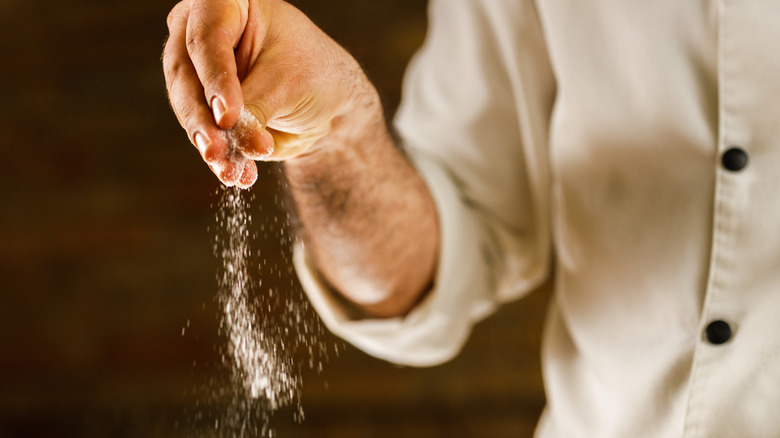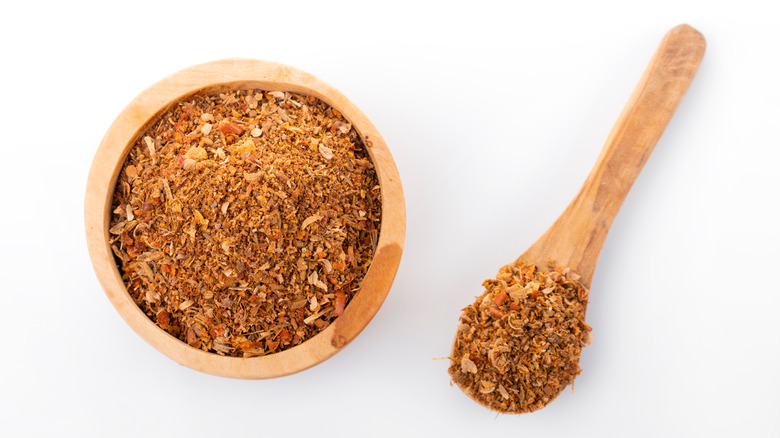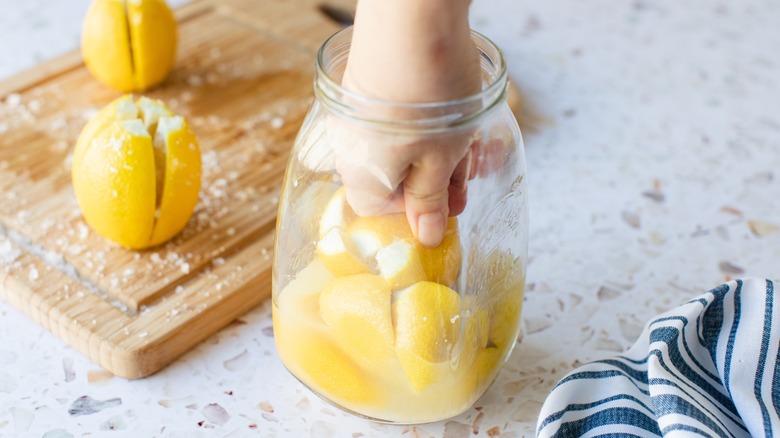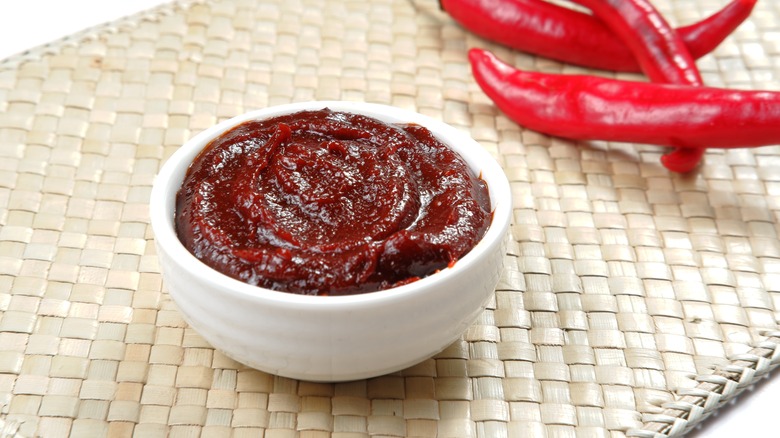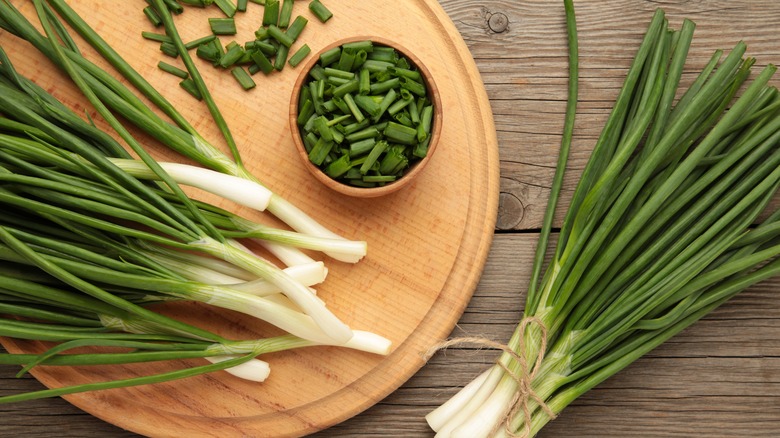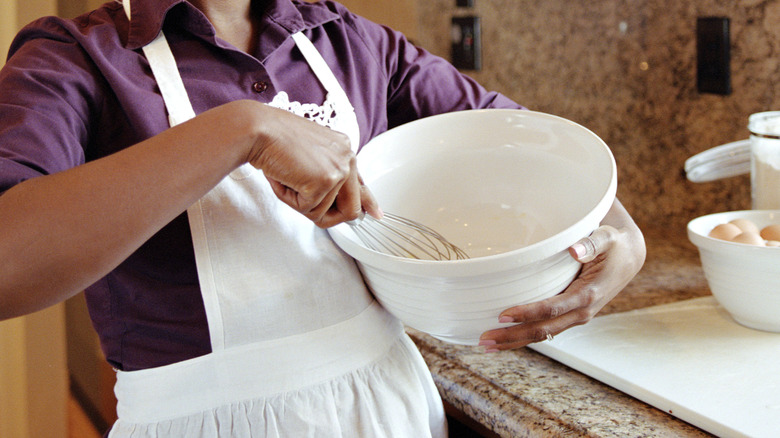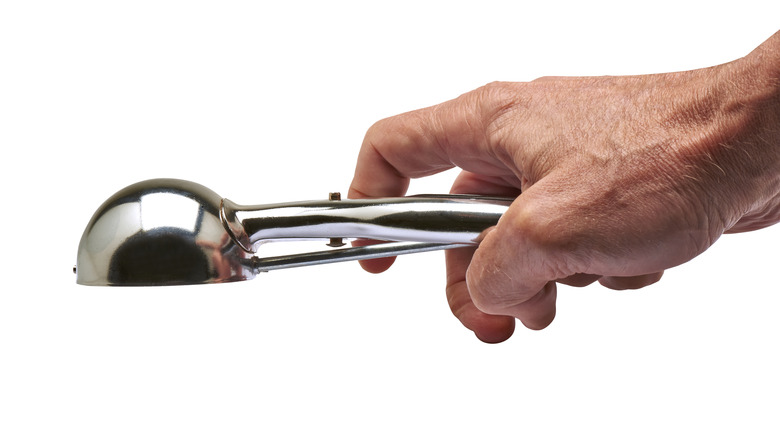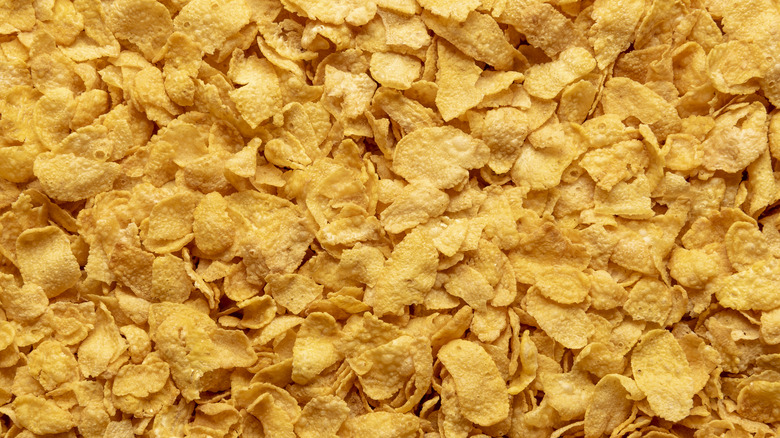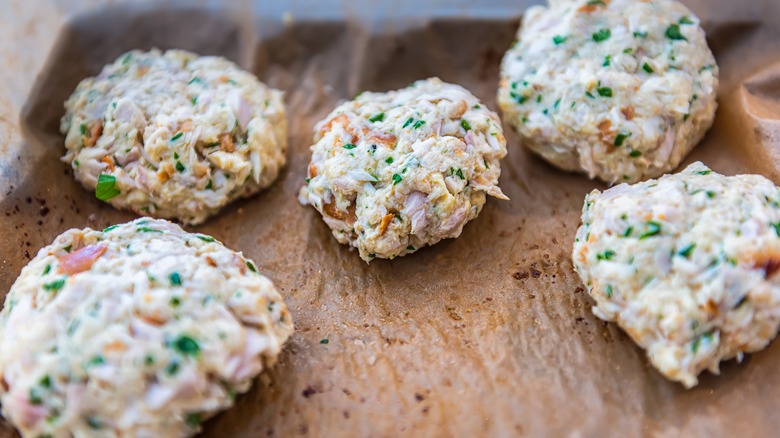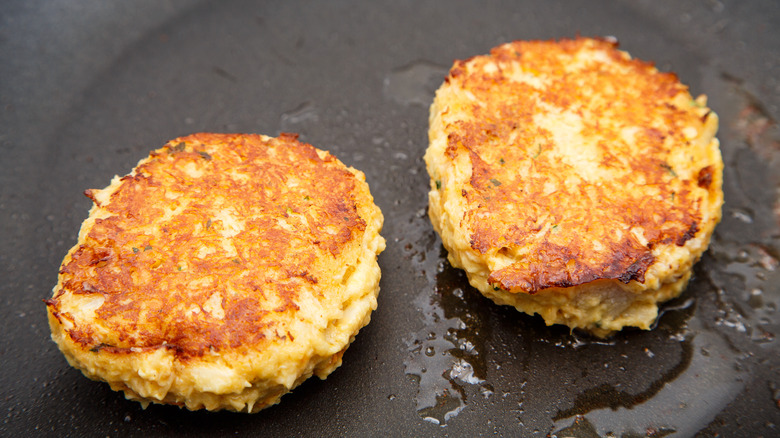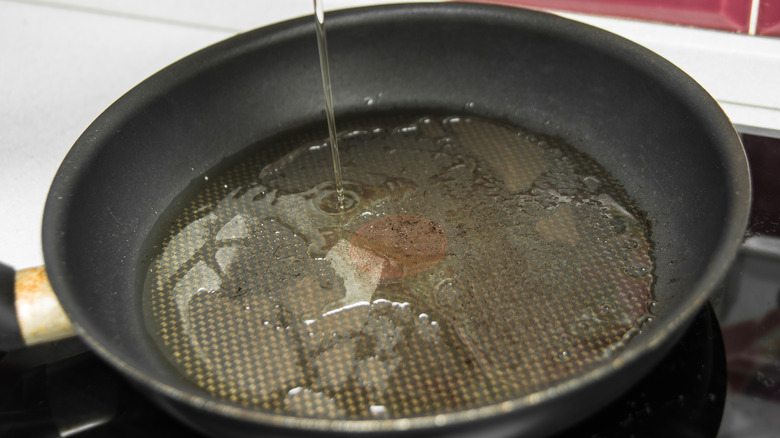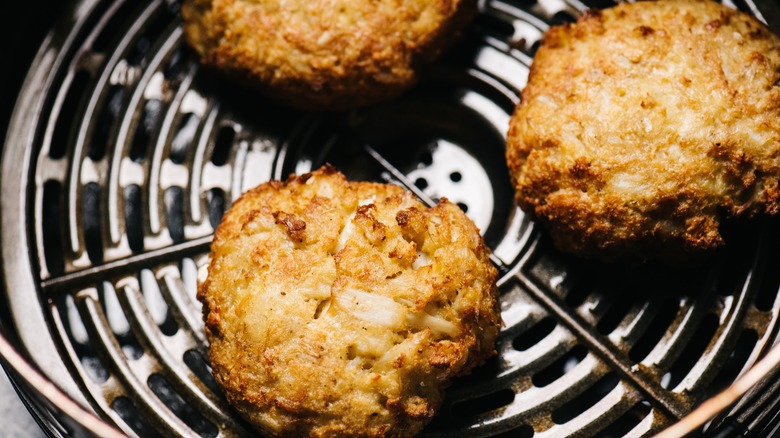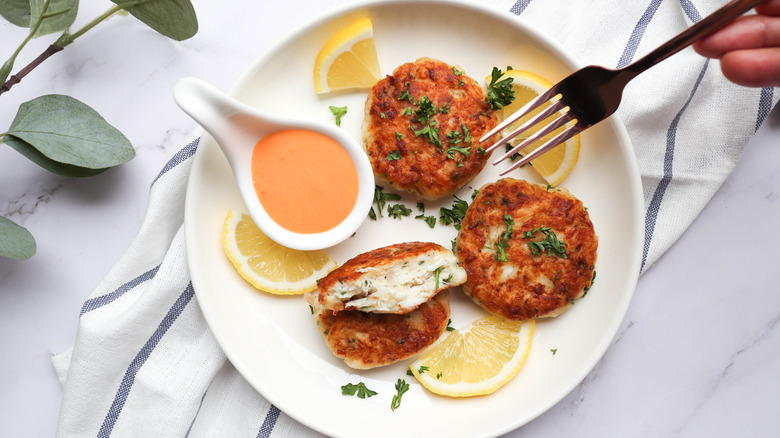Chef Warns Against Making These Mistakes When Cooking Crab Cakes
Once considered a unique specialty enjoyed by those residing on the coast, and in particular the state of Maryland, where blue crabs were abundant in the Chesapeake Bay, crab cakes have become a common appetizer on the menus of restaurants across the country. Crab cakes are essentially fritters or patties made from crab meat, a binder, a filler, and various seasonings, before being baked or fried to crispy perfection. Though their origin is debated, what is incontestable is that they remain a beloved recipe for foodies from all walks of life.
As a professional chef, I consider myself a bit of a crab cake snob. I have eaten and prepared thousands of these delectable appetizers over the course of my career. Personal preferences aside, there are some basic techniques to follow when preparing crab cakes, ranging from the type of crab you use to how you season and serve them. It is my hope that my recommendations on what mistakes to avoid when cooking crab cakes will help you create the most flavorful ones you can, from the comfort of your own home.
Mistake: Failing to consider the different types of crab meat
With so many different types of crab, it can be difficult to know which to use for making your next batch of cakes. Generally speaking, the crabs you often find used are the luscious and sweet-fleshed blue crabs, native to the Chesapeake Bay, or the robust, nutty Dungeness species, hailing from the frigid waters off the Alaskan coast.
That said, many different types of crab are sold commercially in various forms, from fresh and frozen to pasteurized and canned iterations. These hail from all parts of the globe, with various species having a different taste. Part of the fascination of using different types of crab is sampling their distinct flavor profiles and adjusting to them when preparing a batch of crab cakes.
Mistake: Using spoiled crab meat
Not using spoiled crab meat seems obvious, but assessing freshness can be a challenge. The first step is learning how to properly store crab meat for ultimate shelf life. If you plan to cook a whole crab or crab legs, immediately remove the meat from the shell before storing it in the refrigerator. The shell can harbor pathogens that can transfer to the cooked meat. Once sealed in an airtight container, crab meat should be used within three days.
To determine if the crab has gone bad, use your eyes and nose. There should be no obvious discoloration to the meat, nor should it appear to be slimy or spongy. Lastly, the aroma should be sweet and pleasant. Anything resembling an ammoniated smell indicates the crab has passed its prime and should be discarded.
Mistake: Incorrectly using frozen crab meat
A lot of seafood is caught, processed, and flash-frozen directly on the boat, helping to maintain freshness and get the seafood to market safely. While I am not opposed to using frozen crab for making cakes, there are some factors to keep in mind when doing so. Frozen crab can suffer in the texture department, becoming somewhat mushy due to the breakdown of the cellular structure of the muscle fibers.
If properly thawed and safely handled, frozen crab meat can make quality crab cakes. The key is to thaw the crab in the refrigerator overnight. Once it's thawed, eliminating excess moisture is key. To do so, place the crab meat on a baking sheet lined with a wire rack and refrigerate it for an hour, so that cold air can circulate around the meat and dry it out.
Mistake: Only using lump crab meat
Though lump crab meat is the gold standard for crab cakes, it can be expensive and hard to find. Claw meat has a more assertive flavor but can produce a nuanced crab cake worthy of any fine dining restaurant. Its smaller size can also help crab cakes hold together more easily than jumbo lump crab meat alone will.
Fresh may be best, but canned crab is perfectly suitable as an alternative if you know what kind to look for. The best options should be sustainably sourced, contain no additives, and be stored in the refrigerated seafood section of the grocery store. Lastly, while it is not my personal preference, if you must, imitation crab can be used, as long as you recognize that it does not have the same taste or texture as the real deal.
Mistake: Adding the wrong amount of binder
Among the more important factors preventing your crab cakes from falling apart is how much binder you incorporate into them. A binder that is rich in fat, like eggs or mayonnaise, can help hold the ingredients in your crab cakes together, in conjunction with a filler, and give them a luscious mouthfeel. That said, the amount used can overwhelm them, overshadowing the flavor of the crab meat and causing the cakes to become dense.
On the flip side, not adding enough of a binder can prevent the crab meat from adhering to any seasonings or aromatics added — and from adhering to itself, particularly if you plan to use large hunks of lump crab meat. The result will be crab cakes that are impossible to flip or serve, and that fall apart when you try to eat them.
Mistake: Incorporating too much filler
Along with the binder, the filler will behave like the proverbial glue of a crab cake. Ingredients like bread crumbs or flour are often combined with eggs and mayonnaise, helping to fuse the delicate crab meat and added seasonings. Unfortunately, the ratio of filler to binder and crab meat is hard to master. Too little will prevent the crab cakes from holding together, and too much will result in heavy, chewy, crab cakes that lack juiciness and can mask the inherent flavor of the sweet seafood.
The key to delectable crab cakes is to go easy on the filler. It will take a few minutes for the filler to absorb the moisture of the binder and adhere to the crab meat. Add a little at a time, until the crab cakes barely hold together when you pan-fry them, adjusting the ratio as needed.
Mistake: Not using a mousseline
Can adding shrimp to crab cakes make them even better? The answer is a resounding "yes," and the reason it works, besides the fact that shrimp are delicious, is the way you incorporate these curvaceous crustaceans. When turned into a luscious mousseline, or meat paste, the shrimp essentially replaces more aggressively flavored binders, like eggs or mayonnaise, amplifying the seafood flavor of your cakes.
The key is to create a paste by puréeing shrimp with a hint of heavy cream. Once this is gently combined with the crab meat, it will help the lumps of crab adhere to one another, and to the other ingredients added to your cakes. It can also help to offset the use of crab that is of lesser quality, allowing you to save money or accommodate supply chain shortages.
Mistake: Over- or under-seasoning
Seasoning is crucial in any recipe, as herbs and spices enhance the natural flavors of whatever you are cooking. That said, it's easy to over- or under-season something as delicate as crab meat. Crab meat is tender and naturally sweet, with just an essence of salty brine peeking through. For this reason, it is crucial to use a deft hand when adding seasoning to your crab cakes.
You always want to layer flavors, allowing them to develop as they begin to infuse the juicy crab meat. I recommend adding a little at a time, and tasting often. This will allow each batch of crab cakes to shine based on the inherent flavor of the crab. This may feel counterintuitive if you like following recipes to a tee, but it will yield a better result.
Mistake: Always using the same seasonings
When we think of seafood, certain seasoning blends automatically come to mind, such as Old Bay. While there is nothing wrong with these, do not limit yourself based strictly on convention. It can be fun to take a hint from other cultures and culinary styles when making your own variation of a classic recipe.
I tend to favor Mediterranean and Middle Eastern flavors when cooking, using ingredients like lemony sumac or smoky cumin to infuse recipes with complexity. Spice blends are also a great way to go, with ras el hanout, chili powder, or garam masala being great options to jazz up crab cakes. Lastly, don't be afraid to be playful with salts. Though you want to be gingerly with adding salt, using seasoned varieties like smoked or chili-infused ones can really amplify flavor.
Mistake: Skipping the acid
Squirting fresh lemon juice over fish or seafood isn't exactly revolutionary. The reason this is so crucial is that the brightness and refreshing tang of acidic ingredients helps to cut through the briny, salty flavors of the seafood of your choice, balancing these flavors out when they hit your taste buds.
I generally add lemon juice or zest to my crab cake base before forming the patties and cooking them. On occasion, when I am feeling particularly snazzy and seeking to really add zing to my crab cakes, I turn to my secret weapon — preserved lemons. These fermented lemons, popular in North African cuisine, add a funky yet sophisticated pop of acidity that is unlike anything else. Just be careful to only use the washed peels and discard the flesh of the lemon, which can be extremely salty.
Mistake: Foregoing the heat
Despite crab's delicate, sweet flesh, a little spice never hurts when it comes to kicking up flavor a notch. Many chefs turn to spicy condiments to amplify crab cakes, such as sriracha, harissa paste, or gochujang. These sauces benefit from other umami-rich flavors and are often fermented, conferring even more nuance that, when used with restraint, can completely transform your crab cakes.
Deciding which to use will depend on your personal heat tolerance and distinct taste preferences. Sriracha tends to be milder and a bit more garlicky. It also has a smooth texture that easily combines with the crab meat. Harissa comes in mild and hot varieties and is generally more on the chunky side, with bright acidic notes. Gochujang is typically quite spicy, has a robust savory flavor, and is more of a dense paste.
Mistake: Forgetting the aromatics
Aromatics, including herbs, spices, and vegetables like garlic and onions, are the foundation of many recipes. They infuse a dish with a rich flavor and aroma that you would miss if they were omitted. When it comes to making crab cakes, these are no less important. As with other ingredients, these should be incorporated skillfully and cautiously, so as not to mask the inherent flavor of the seafood.
Fresh herbs, like dill, fennel fronds, cilantro, or parsley, add a brighter flavor and pop of color. I also like to infuse freshly chopped garlic, green onions, or shallots, though I tend to be more conservative with these, since they will not get thoroughly cooked. If you want to mellow alliums before adding them to crab cakes, lightly sauté and cool them before integrating them into the mixture.
Mistake: Overmixing the crab cakes
Crab meat is notoriously fragile and prone to falling apart if not handled gently. Thus, it is crucial to avoid overmixing crab cakes when assembling the base. The best way to incorporate ingredients with crab meat is to fold them together, until just combined.
Though a spatula is effective for this purpose when making some things, it is less well suited to stirring crab cakes. Your hands are the best tool, though you may want to wear gloves to avoid the aromas of the seafood permeating your skin. I also recommend washing your hands in cold water between folds, to avoid the heat from your hands transferring to the crab cake base, causing it to become gummy.
Mistake: Not using an ice cream scooper to shape crab cakes
When it comes to forming the perfect crab cake, you may run into a similar problem using your hands as you did with mixing the base — the mixture will heat up and become sticky. It is also challenging to consistently create the same-sized and shaped crab cake. The solution is to use an ice cream scooper for this task.
The ideal scooper to employ is one that has a release handle and is approximately 1½ to 2 inches in diameter. When scooping, I always draw the mixture along the rim of the bowl to flatten out the top, before releasing the base into my exterior coating of choice. This allows me to maintain the same size and easily flatten the cake into the appropriate shape without handling it too much.
Mistake: Not changing up the exterior coating
Most recipes will call for encasing crab cakes in a coating that will help the crust crisp up when cooked. Bread crumbs may be common, but they are by no means the only, or best, option you can use. There are many others that not only taste better but crisp up more effectively. Additionally, many of these can be used to accommodate those with gluten allergies.
Cornmeal, nut meals including almond and pecan, panko bread crumbs, and crushed saltines or butter crackers are all perfect coatings. Another great, and cost-effective, option is to use leftover cereal to coat your crab cakes. Just be sure to use one that is not overly sweetened or dense. Good options are corn flakes or plain Chex, which are light and have a neutral enough flavor to not overwhelm the crab.
Mistake: Forgetting to refrigerate the crab cakes
If you have ever struggled with your crab cakes falling apart in the pan while you cook them, you may have skipped one crucial step. Refrigerating your formed and coated crab cakes is the key to maintaining their structural integrity. This is particularly important if you didn't add too much binder or filler to hold your cakes together.
For best results, refrigerating the cakes overnight is ideal, giving them plenty of time to set. Just be sure to cover them well with plastic wrap so that the crab aroma does not permeate everything else in your refrigerator. If you are pressed for time, pop them into the freezer for 20 to 30 minutes, but don't leave them there too long; otherwise, the center of the cakes will cook inconsistently.
Mistake: Overcooking the crab cakes
When it comes to cooking crab cakes, the method you use is less important than how long you cook them. What makes the perfect crab cake so irresistible is a slightly crunchy exterior and a moist, warm interior. This can be achieved by baking, pan-frying, or even grilling the crab cakes, using a grill pan to prevent them from burning or sticking. The only method I dislike for cooking crab cakes is deep-frying them. I find they become too crunchy on the exterior, dry and mealy in the center, and greasy.
Regardless of the method used, you should always cook the interior of the crab cakes to a safe minimum internal temperature of 165 degrees Fahrenheit. The best way to determine the doneness of your crab cakes is to use a meat thermometer to test their internal temperature.
Mistake: Cooking crab cakes in the wrong type of fat
My preferred method for cooking crab cakes is to pan-fry them over medium-high heat. In addition to using a pan that can tolerate high-heat cooking, like cast iron, carbon, or stainless steel, you should also consider the type of fat you cook them in.
To obtain a golden brown crust, an oil with a high smoke point is required. The best oil to use for this purpose is one that does not have an aggressive flavor, which can easily overwhelm the crab meat. Coconut and peanut oils are great for certain applications, but this is not one of them. A better option would be canola or safflower oil. If you really want the taste of butter but are afraid of it burning before the cakes are browned, opt for clarified butter, which has a higher smoke point.
Mistake: Not using the air fryer
If you are searching for a crisp crust without adding a lot of fat to your crab cakes, you may want to employ that air fryer. Air fryers work by allowing hot air to circulate around whatever you make in them, thereby cooking the item more quickly evenly and creating a golden, crunchy exterior. This is everything you want in a crab cake.
The key to cooking crab cakes in an air fryer is to spray the fryer basket with cooking spray before adding your crab cakes so that they don't stick. You will also want to moderate the heat used so that you don't dehydrate the interior of the cake. A temperature around 350 degrees Fahrenheit will usually do the job in just a few minutes.
Mistake: Always serving the same sauce
Now that you have the perfectly executed crab cake, it's time to dig in. This usually involves serving the cakes with the perfect dipping sauce. While a classic remoulade sauce is always a good idea, there are plenty of other options that can help take your crab cakes from casual to cosmopolitan.
Some of my favorite sauces are bold, but not so assertive as to mask the inherent taste of the crab meat. That said, don't be afraid to experiment with different flavor profiles and, more importantly, textures. Sometimes a completely smooth, tangy yogurt and dill spread can seem like a luxurious pleasure. Often, however, there is nothing wrong with a slightly chunky tropical fruit salsa or an herbaceous pesto or salsa verde that is loaded with acidic ingredients to balance out the crisp, juicy crab meat.
